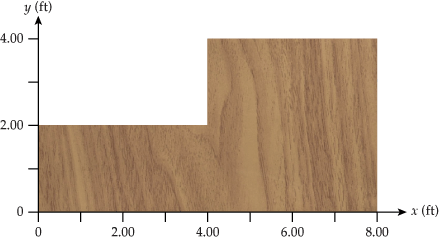cbarker1
Gold Member
MHB
- 345
- 23
Dear Everybody,
Shown below is a 4.00-ft by 8.00-ft sheet of plywood with the upper left quadrant removed. Assume the plywood is uniform and determine the x and y coordinates of the center of gravity. Hint: The Earth's gravitational field is also uniform for the entire sheet of plywood.

I know the center of mass of the smaller rectangle is at (2,1) and the larger rectangle is at (6,2). I know the density is twice the area of the small rectangle of wood. I need some help with the total center of mass of the object above.
Shown below is a 4.00-ft by 8.00-ft sheet of plywood with the upper left quadrant removed. Assume the plywood is uniform and determine the x and y coordinates of the center of gravity. Hint: The Earth's gravitational field is also uniform for the entire sheet of plywood.

I know the center of mass of the smaller rectangle is at (2,1) and the larger rectangle is at (6,2). I know the density is twice the area of the small rectangle of wood. I need some help with the total center of mass of the object above.
Last edited by a moderator:
